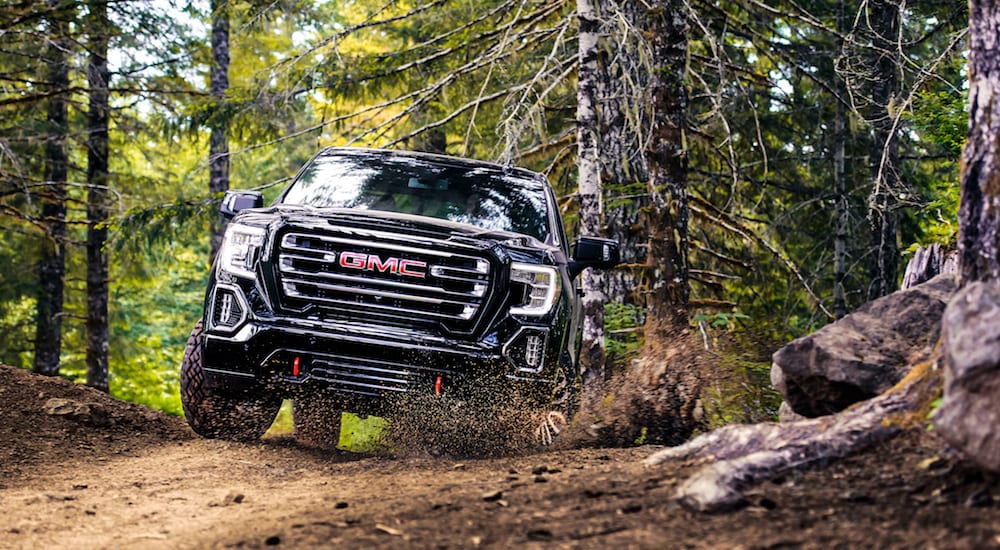So, you’re ready to buy a new car, crossover or truck. While it may be tempting to just pull the trigger and head down to your local GMC dealer, Buick store, or used car lot, you might want to pump the breaks a bit. There’s nothing wrong with a little enthusiasm, but you definitely want to temper that gung-ho spirit with a little bit of prudence. On the other hand, some of you may be intimidated by the car-buying process as a whole. Regardless of which side of the aisle you find yourself on, there is a right way of going about things to ensure both your comfort during the process and your satisfaction when all is said and done. And that way, is built around maintaining a degree of perspective.
That’s Right, Perspective…
By “perspective”, we refer to an active awareness of what you deserve and are entitled to as a consumer, and how it relates to the dealership, including the steps they’ll take to look out for their own best interests.
Disregard, for a moment, the fact that tens of thousands of vehicles are sold in the U.S. each and every day. At over 16 million vehicles sold per year, it’s easy to be intimidated by such a grand number. But the size and scale of the industry has little to do with your expectations as to service and where they should be set.
At the end of the day, the dealership relies upon the creation of relationships (preferably ‘continued’, as opposed to ‘one-time’, in order to maintain operations). While some dealerships are more successful than others in terms of creating and maintaining such relationships, their need to do so rest at the core of their success (or lack thereof).
Consider, for a moment how this puts you at an immediate advantage. No-one is forcing you to buy a particular car or demanding that you do with business with a particular dealership. You can always walk away. You can always adjust your plan. The dealership, however, needs your sale. They want to cultivate a relationship which will compel you to buy from them, because they have sales goals that need to be met. Bottom-line, they are far more desperate to sell you a car than you are to buy it from them. That said, the best thing you can do is perform your own due diligence to ensure that you are able to approach the dealership, ready to buy with confidence.
Do the Research
While it’s such a simple step to prioritize, the simple truth is that all-too-many car buyers will visit a dealership on a whim, and make an uninformed (and potentially harmful) purchase right there on the spot. Whether that decision is driven by blind loyalty to a particular make or model, impulsive buying habits, fiscal irresponsibility, or simple short-sightedness is beside the point. The percentage of car-buyers who operate with this methodology are far more likely to make hasty decisions, lining themselves up to encounter headaches down the road.
Do the research. And by ‘research’ we don’t simply mean an exhaustive comparison of various makes and models, we mean a real exploration of what vehicle and financing plan will be the best fit for the unique demands of your budget and lifestyle. This might mean exploring the offerings of an automaker who you have little or no experience with. It might mean consideration of a vehicle style, and/or model that you hadn’t previously considered. It could mean exposing the value of a used or Certified Pre-Owned vehicle as opposed to a new model year offering. It could mean researching and comparing one dealership against another, to determine who you want to do business with. And it certainly means exploring all the financing options that are available to you, ensuring that you’ve empowered yourself with the best possible buying terms.
By taking the time to consider all of your options upfront, you’re allowing yourself the opportunity to approach the process with confidence. You understand your importance to that dealership, recognizing yourself as a potential sale which they need to win. You won’t be swayed by misinformation, because you’ve already done your research. You understand the realities of your budget, and have determine the most suitable financing option. With that in mind, here are a few additional tips to keep in mind.
1. Buy Based on Purchase Price, Not on Monthly Payments
An attractive monthly payment is one of the most dangerous weapons in a dealership’s arsenal. That said, the attractive payment might be stretched out across as many as 72-months, which is a less than favorable time period to amortize any monthly payments across. By negotiating the “full” purchase price, you are insisting on greater visibility of what may otherwise be hidden costs. From preparation and delivery fees, to dealership costs and taxes, you’ll have greater control of your purchase if you negotiate it as a whole.
2. Trade-In? Don’t Mention It
When negotiating the purchase price of your vehicle, refrain from offering any indication if/that a trade-in vehicle needs to be factored into the numbers. By mentioning it up front, you’ve given the dealership the opportunity to minimize the trade-in offer and pad the purchase price in their own favor. By negotiating the price down first, then tacking the trade-in at the end of the conversation, you’re ensuring the best possible deal.
3. Forget the Add-Ons
All of your hard work in negotiating the best possible price goes out the window once you start tacking on additional line items. Rust-proofing? VIN etching? Dealership Maintenance Plan? Even an Extended Warranty? These can all be unnecessary extras with little or no benefit to you or the life of the vehicle. Don’t be pressured into such purchases, unnecessarily. You’re only hurting yourself.
Bottom Line…you can empower yourself to be the one calling the shots if you maintain the right perspective. Look out for yourself. Let the dealership work for you, not against you, and you just might end up being a very satisfied customer.





